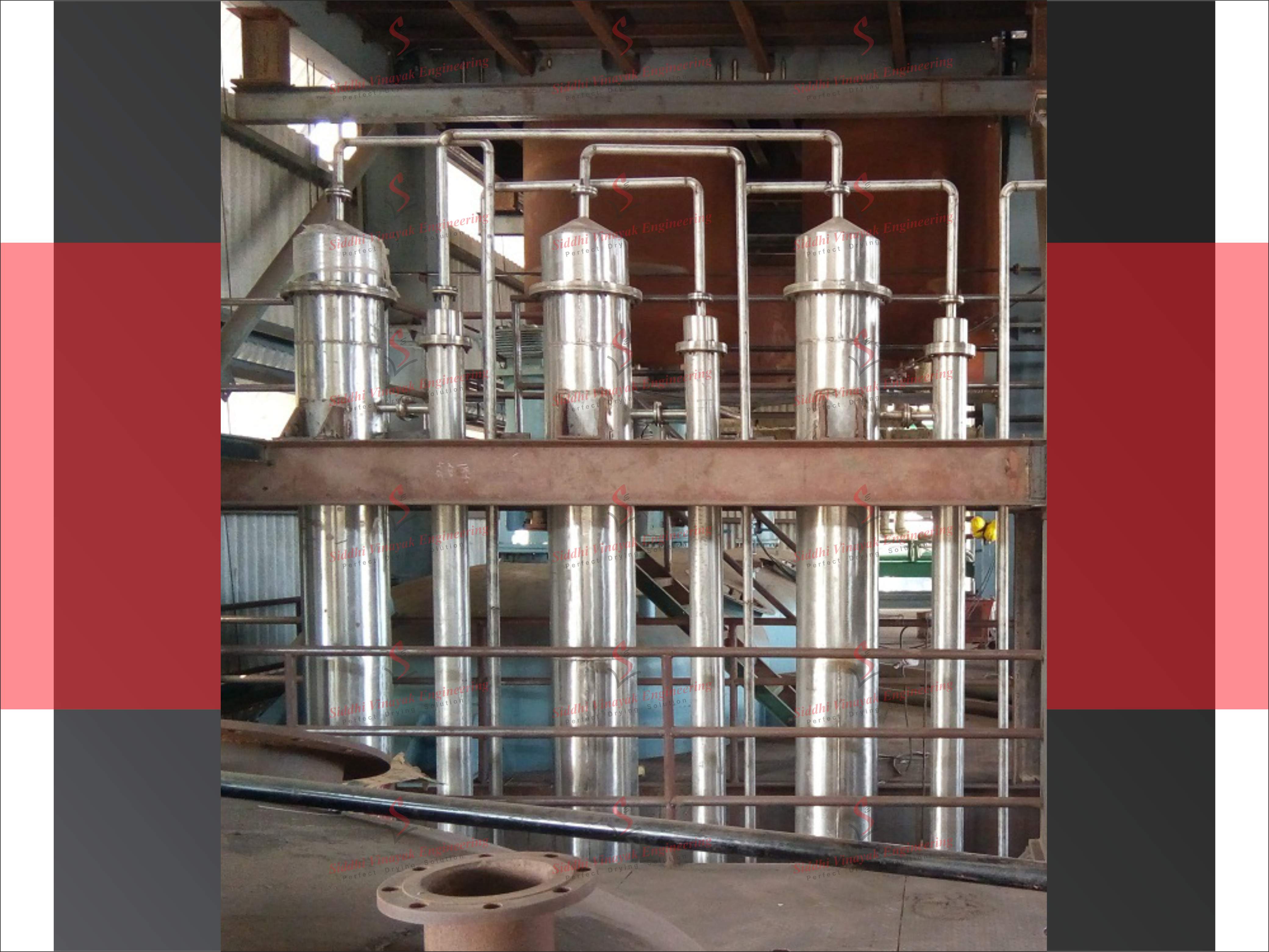
Effluent Evaporator
Effluent Evaporator
Introduction
Effluent Evaporators are specialized systems designed to treat industrial wastewater by evaporating the water content and reducing the volume of effluent requiring disposal. By using heat to separate contaminants from water, these systems help industries meet environmental regulations, reduce waste handling costs, and enable water reuse. This technology is particularly useful in industries where effluents are difficult or costly to treat through conventional methods.
Applications
Effluent evaporators are widely used across industries such as:
-
Chemical and pharmaceutical manufacturing
-
Textile and dyeing industries
-
Food and beverage processing
-
Oil and gas industries
-
Power plants
-
Automotive and aerospace sectors
Features
-
Energy-efficient heating technologies (e.g., thermal, mechanical vapor recompression, solar-assisted)
-
Corrosion-resistant materials (e.g., stainless steel, titanium)
-
Automated operation and controls
-
Compact, skid-mounted or modular design
-
Ability to handle high Total Dissolved Solids (TDS)
-
Zero Liquid Discharge (ZLD) compatibility
-
Customizable to suit various effluent types
Benefits
-
Significant reduction in effluent volume
-
Compliance with strict discharge regulations
-
Reduced costs for transportation and disposal
-
Enables water reuse, supporting sustainability goals
-
Low operational cost and long service life
-
Environmentally friendly technology
-
Minimizes environmental impact
Key Points Summary
-
Reduces waste volume by up to 95%
-
Enables water recovery and reuse
-
Robust construction ensures long-term use
-
Energy-efficient and cost-effective
Why Choose Us?
-
Proven Expertise: Years of experience in effluent treatment solutions.
-
Cutting-edge Technology: We integrate the latest evaporation technologies with energy-efficient designs.
-
Customized Engineering: Tailored systems based on your effluent type, volume, and operational goals.
-
End-to-End Support: From design and installation to maintenance and upgrades.
-
Eco-Friendly Solutions: We focus on Zero Liquid Discharge (ZLD) and sustainable practices.
-
Global Installations: Successful deployments across multiple countries and industries.
-
High ROI: Our systems save money through waste reduction, resource recovery, and compliance avoidance.
Uses
Effluent Evaporators are ideal for:
-
Concentrating and reducing hazardous waste
-
Treating brine or saline water
-
Managing leachate from landfills
-
Treating rinse water in electroplating
-
Reducing sludge volume before disposal
-
Achieving ZLD in industrial processes
Conclusion
Effluent Evaporators are a game-changing solution for industrial wastewater management. They offer a sustainable, cost-effective method to treat complex effluents while complying with environmental standards. By adopting evaporator technology, industries can achieve Zero Liquid Discharge, reuse water, recover valuable materials, and significantly cut down on waste disposal costs.
FAQs with Detailed Answers
1. What is an effluent evaporator?
An effluent evaporator is a device that uses heat to evaporate water from industrial wastewater, separating clean water vapor from contaminants. The vapor can be condensed and reused, while the remaining sludge is minimized and easier to dispose of.
2. How does an effluent evaporator work?
Effluent evaporators work on the principle of phase change. Wastewater is heated until the water content evaporates, leaving behind concentrated residues. The vapor is then condensed into clean water, which can be reused or discharged safely.
3. What industries benefit most from effluent evaporators?
Industries with high volumes of liquid waste, such as pharmaceuticals, textiles, electroplating, chemicals, and food processing, benefit significantly. These systems are especially useful where effluents have high TDS or require zero discharge.
4. Is effluent evaporation environmentally friendly?
Yes. Effluent evaporators reduce the volume of waste needing disposal and recover water for reuse. They help companies meet environmental regulations, reduce carbon footprint, and support sustainable practices.
5. What types of effluent can be treated?
Effluent evaporators can treat various types including acidic or alkaline wastewater, saline water, oily waste, dye wastewater, metal-laden rinse water, and high-strength organic wastewater.
6. What is Zero Liquid Discharge (ZLD) and how do evaporators help?
ZLD is a treatment process where no liquid waste is discharged into the environment. Effluent evaporators help achieve ZLD by recovering nearly all water from wastewater and converting it into reusable water and solid waste.
7. What energy sources do effluent evaporators use?
Depending on the design, they can use electricity, steam, solar energy, or waste heat. Advanced models may incorporate mechanical vapor recompression for energy savings.
8. What are the maintenance requirements?
Effluent evaporators are low-maintenance systems. Regular inspections, cleaning of heat exchangers, and monitoring of control systems ensure smooth operation. Automated systems reduce manual intervention.
9. How is the treated water reused?
The condensed water from evaporation is often clean enough for reuse in cooling towers, boiler feedwater, rinsing processes, or other non-potable industrial applications.
10. What is the typical ROI for installing an evaporator system?
ROI depends on effluent volume, disposal costs, and local regulations. However, many users see payback within 1–3 years due to reduced waste handling, water reuse, and regulatory compliance.
11. Are there any limitations to using effluent evaporators?
While highly effective, they may have higher upfront costs than traditional methods. They also require space for installation and may not be suitable for effluents that form volatile hazardous compounds when heated.
12. Can the system be customized for my industry?
Absolutely. Effluent evaporators are highly customizable. Engineers can tailor materials, heat sources, control systems, and configurations based on effluent type, volume, and operational goals.

